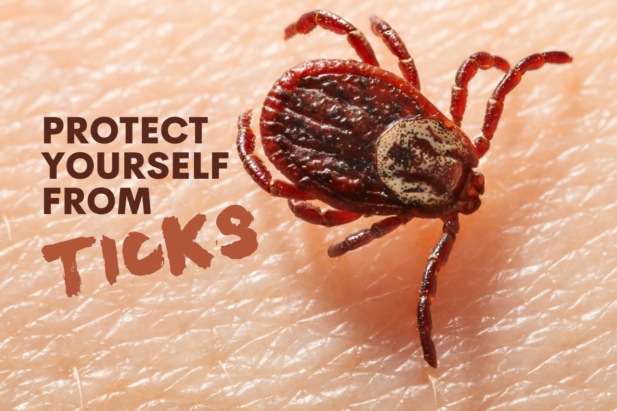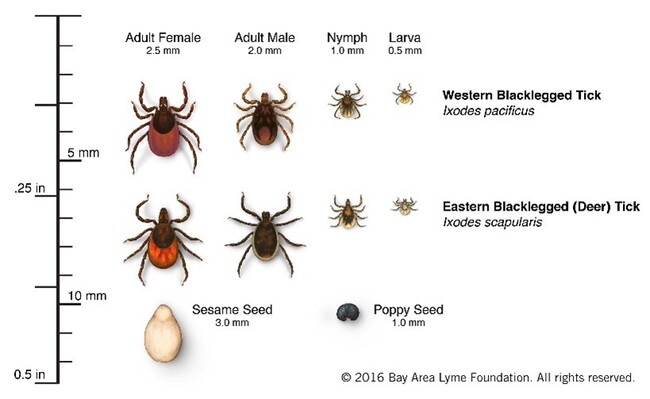Protect Yourself From Ticks

Spring is around the corner and although March has been snowy, the weather is slowly warming up and ticks will soon start to pop up. With ticks come tick-borne illness: Lyme disease, Bartonella, Babesia, anaplasmosis, and others. Luckily, there are many ways to prevent tick bites. Read on for information about prevention, what to do if you have been bitten, and more.
How can I prevent a tick bite?
You may come across ticks in a variety of settings – often while walking your dog, hiking, mountain biking, gardening, or any outdoor activities, especially in tall grass or wooded areas. When you are in these settings, be sure to: stay covered (and stylish) by wearing long pants and tucking them into socks; shower immediately after outdoor activities; and wash all outdoor clothing and dry on high heat to kill any ticks and larvae. You can also treat clothing and gear with products containing 0.5% permethrin. Permethrin can be used to treat boots, clothing and camping gear and remains protective through several washings. As well as using insect repellents containing DEET, picaridin, IR3535, Oil of Lemon Eucalyptus (OLE), para-menthane-diol (PMD), or 2-undecanone. Once you return to your home, be sure to do a full tick check including using a mirror to check areas such as: under the arms, in and around the ears, inside belly button, back of the knees, in and around the hair, and between the legs.
I got bit! What now?
If you think you have been bitten by a tick, the first step is removal:
- Remove the tick as soon as you find it. Removing a tick in the first 24 hours dramatically reduces the risk of disease.
- Remove by grasping the tick between the head of the tick and the skin and pulling firmly but gently away. This may leave small black mouthparts of the tick in the skin; these do not transmit disease and should be left alone for your body to naturally expel. For more detail, check out: https://www.hopkinslyme.org/lyme-education/what-to-do-after-a-tick-bite/
- Save the tick in a sealed plastic bag and contact your PCP to see if they want to test it for disease. Only blacklegged/deer ticks (pictured below) spread Lyme disease.

Once you have removed the tick, watch out for signs of infection over the next month including:
- A bullseye rash (erythema migrans)
- Fever
- Headache, neck stiffness
- Excessive fatigue
- Joint pain/swelling
- Facial drooping on one side (Bell’s Palsy)
If you think you've been infected, contact your PCP immediately or reach out to an International Lyme and Associated Diseases Society (ILADS) certified, Lyme-literate physician in the area.
Corona and Lyme
In the last few years, it has come to the attention of the medical community that a COVID-19 infection can exacerbate previously dormant conditions. If you have not recently been bitten by a tick, but have had a corona virus infection, and have Lyme-like symptoms, reach out to your doctor to be tested. Co-infections can cause symptoms of Lyme disease to appear, even if you've never noticed them before.?
Once you have started treatment for an infection, physical therapy can help you manage the side effects of the treatment, as well as get you back to your usual activities. Call us at (802) 860-4360 and ask to be scheduled with one of our Lyme specialists at the Williston clinic.
References:
https://www.cdc.gov/ticks/avoid/on_people.html


